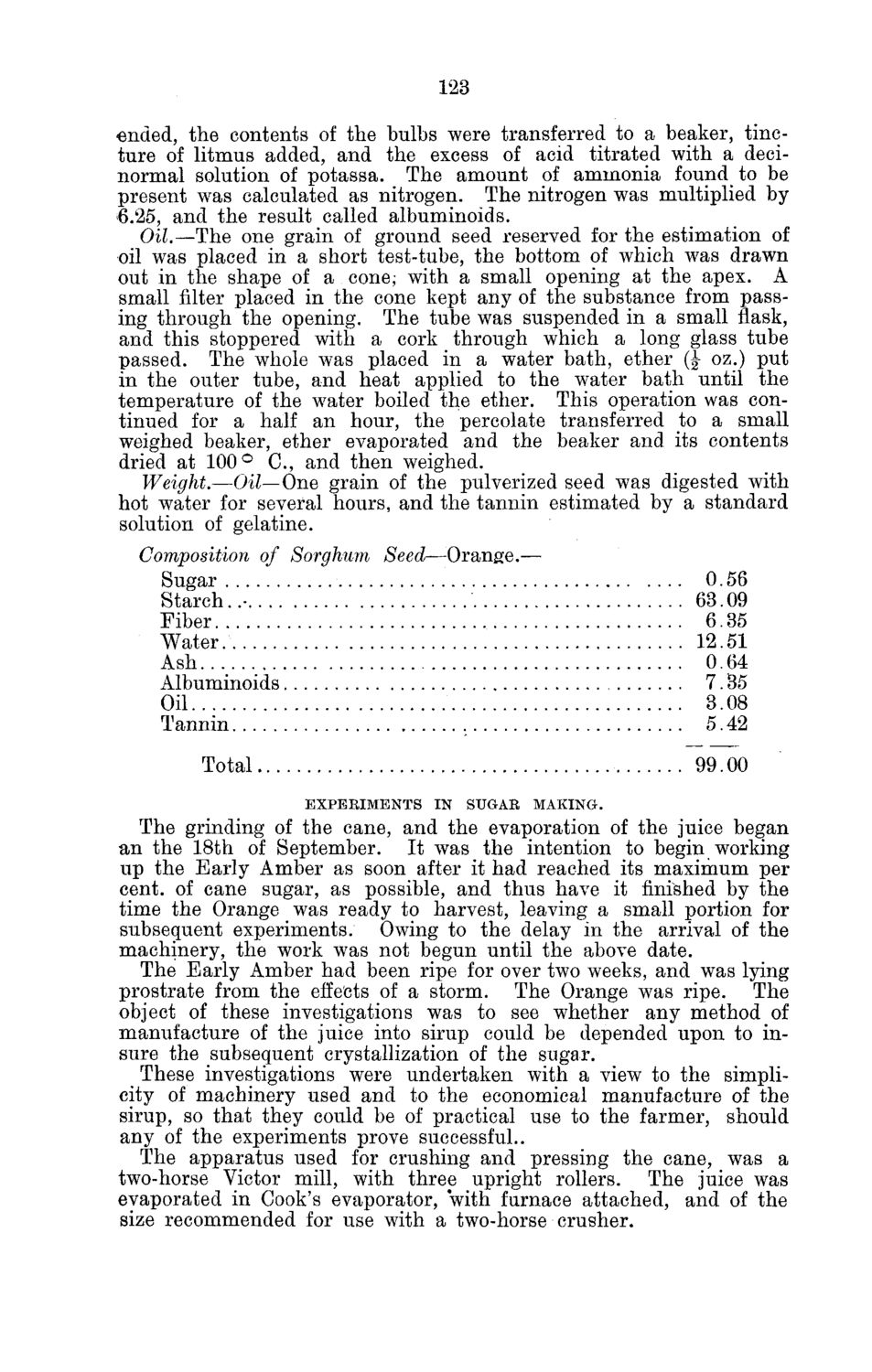| |
| |
Caption: Board of Trustees Minutes - 1880
This is a reduced-resolution page image for fast online browsing.

EXTRACTED TEXT FROM PAGE:
123 ended, the contents of the bulbs were transferred to a beaker, tincture of litmus added, and the excess of acid titrated with a decinormal solution of potassa. The amount of ammonia found to be present was calculated as nitrogen. The nitrogen was multiplied by $.25, and the result called albuminoids. Oil.—The one grain of ground seed reserved for the estimation of oil was placed in a short test-tube, the bottom of which was drawn out in the shape of a cone; with a small opening at the apex. A small filter placed in the cone kept any of the substance from passing through the opening. The tube was suspended in a small flask, and this stoppered with a cork through which a long glass tube passed. The whole was placed in a water bath, ether (|- oz.) put in the outer tube, and heat applied to the water bath until the temperature of the water boiled the ether. This operation was continued for a half an hour, the percolate transferred to a small weighed beaker, ether evaporated and the beaker and its contents dried at 100° C , and then weighed. Weight.—Oil— One grain of the pulverized seed was digested with hot water for several hours, and the tannin estimated by a standard solution of gelatine. Composition of Sorghum Seed—Orange.— Sugar 0.56 Starch..63.09 Fiber 6.35 Water. 12.51 Ash 0.64 Albuminoids 7.35 Oil 3.08 Tannin 5.42 Total EXPERIMENTS IN SUGAR MAKING. 99.00 The grinding of the cane, and the evaporation of the juice began an the 18th of September. It was the intention to begin working up the Early Amber as soon after it had reached its maximum per cent, of cane sugar, as possible, and thus have it finished by the time the Orange was ready to harvest, leaving a small portion for subsequent experiments. Owing to the delay in the arrival of the machinery, the work was not begun until the above date. The Early Amber had been ripe for over two weeks, and was lying prostrate from the effects of a storm. The Orange was ripe. The object of these investigations was to see whether any method of manufacture of the juice into sirup could be depended upon to insure the subsequent crystallization of the sugar. These investigations were undertaken with a view to the simplicity of machinery used and to the economical manufacture of the sirup, so that they could be of practical use to the farmer, should any of the experiments prove successful.. The apparatus used for crushing and pressing the cane, was a two-horse Victor mill, with three upright rollers. The juice was evaporated in Cook's evaporator, with furnace attached, and of the size recommended for use with a two-horse crusher.
| |